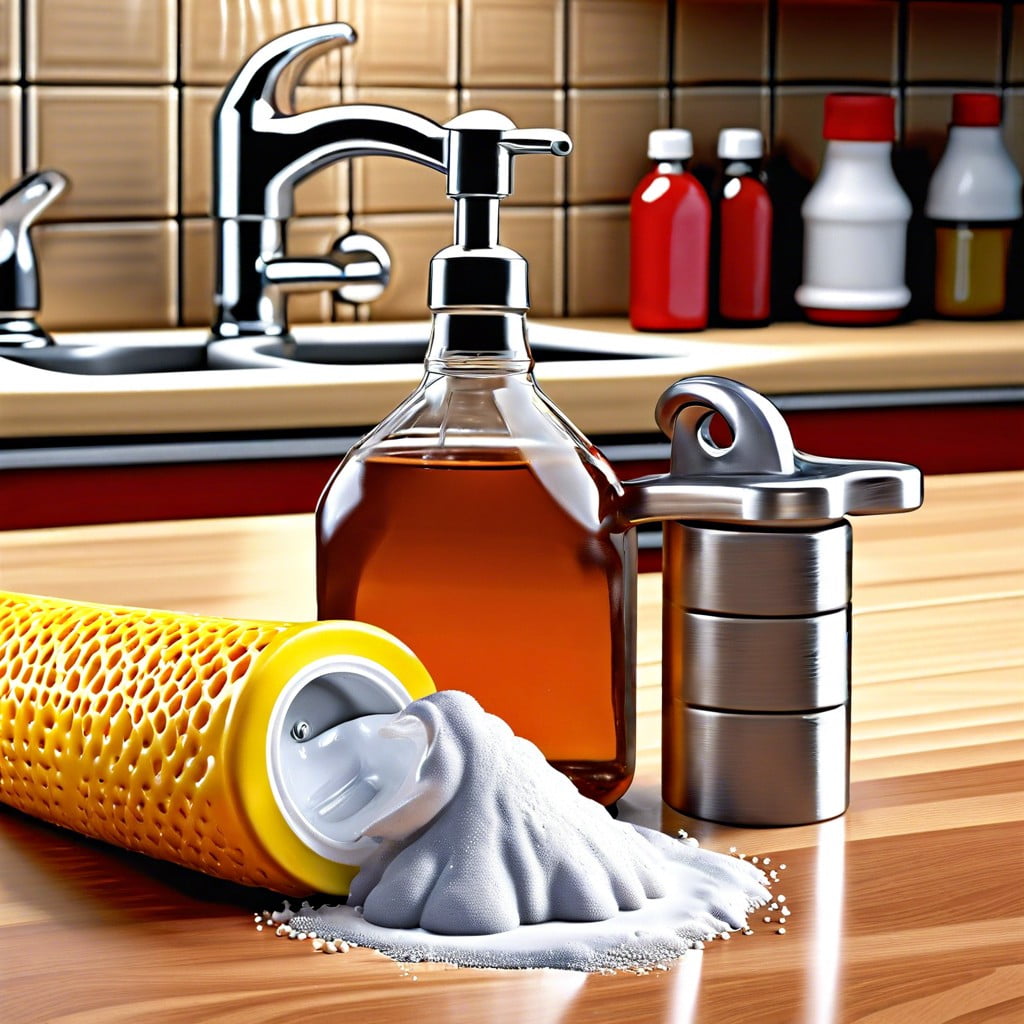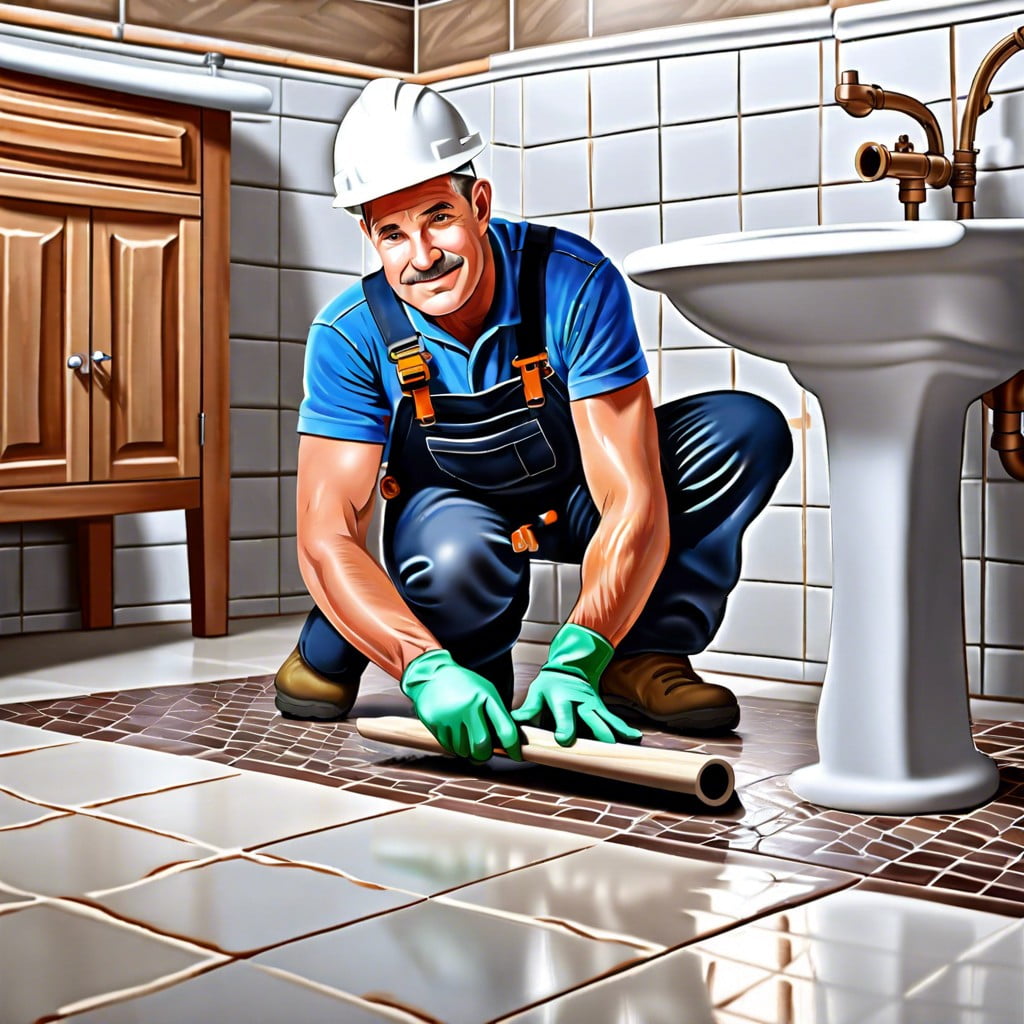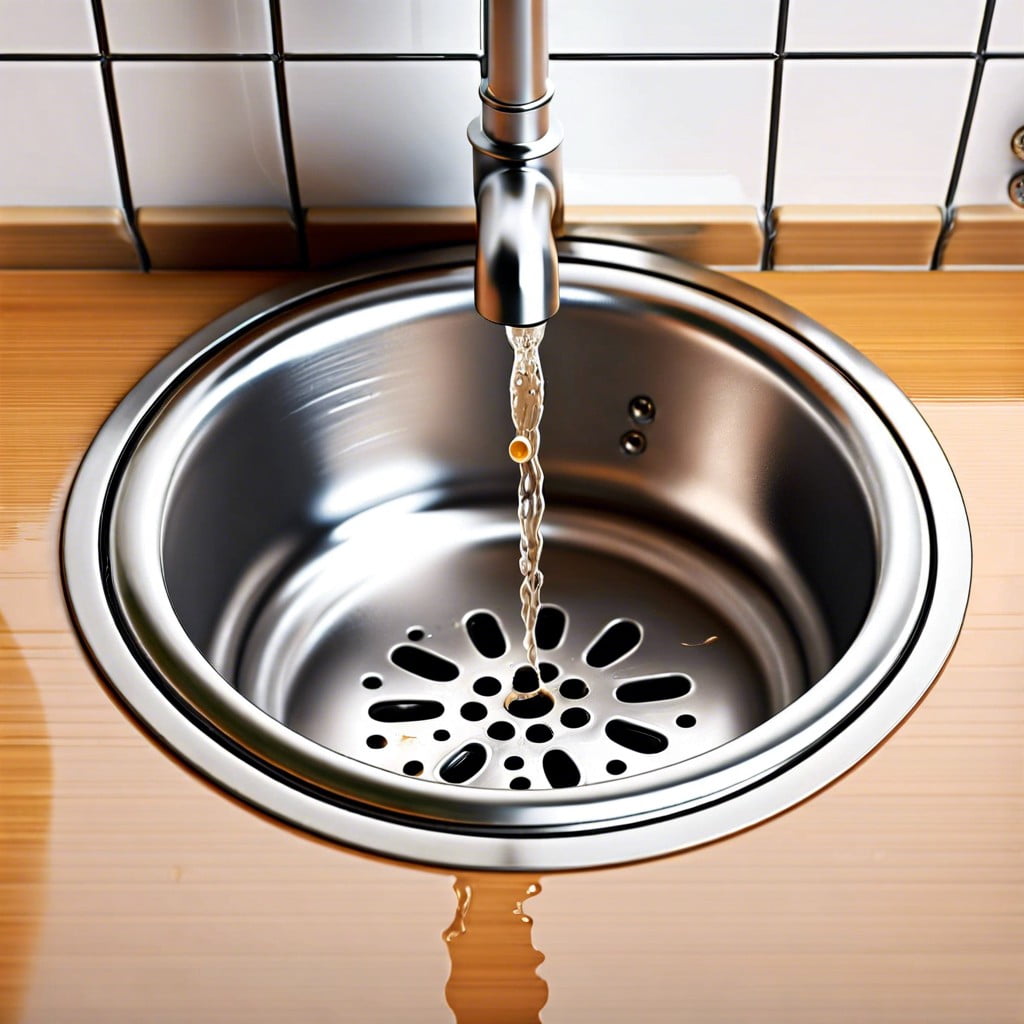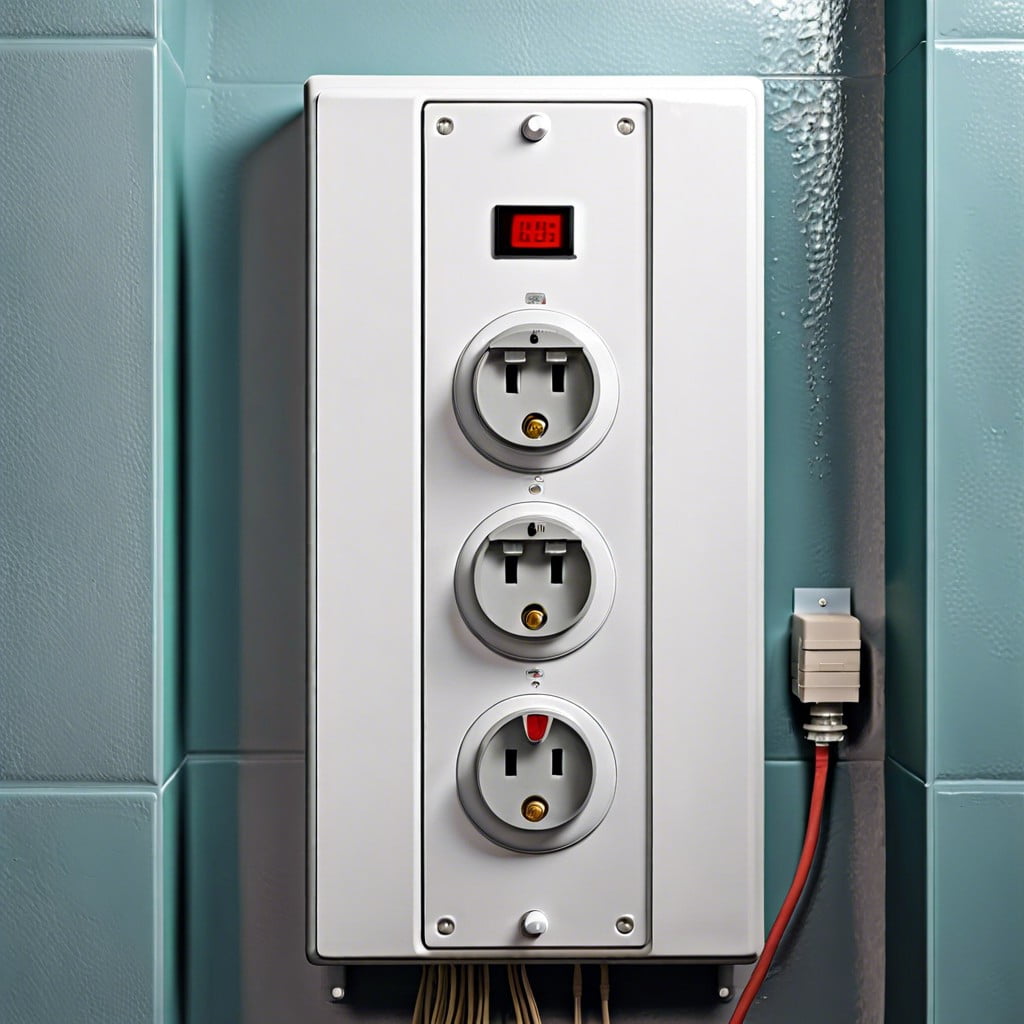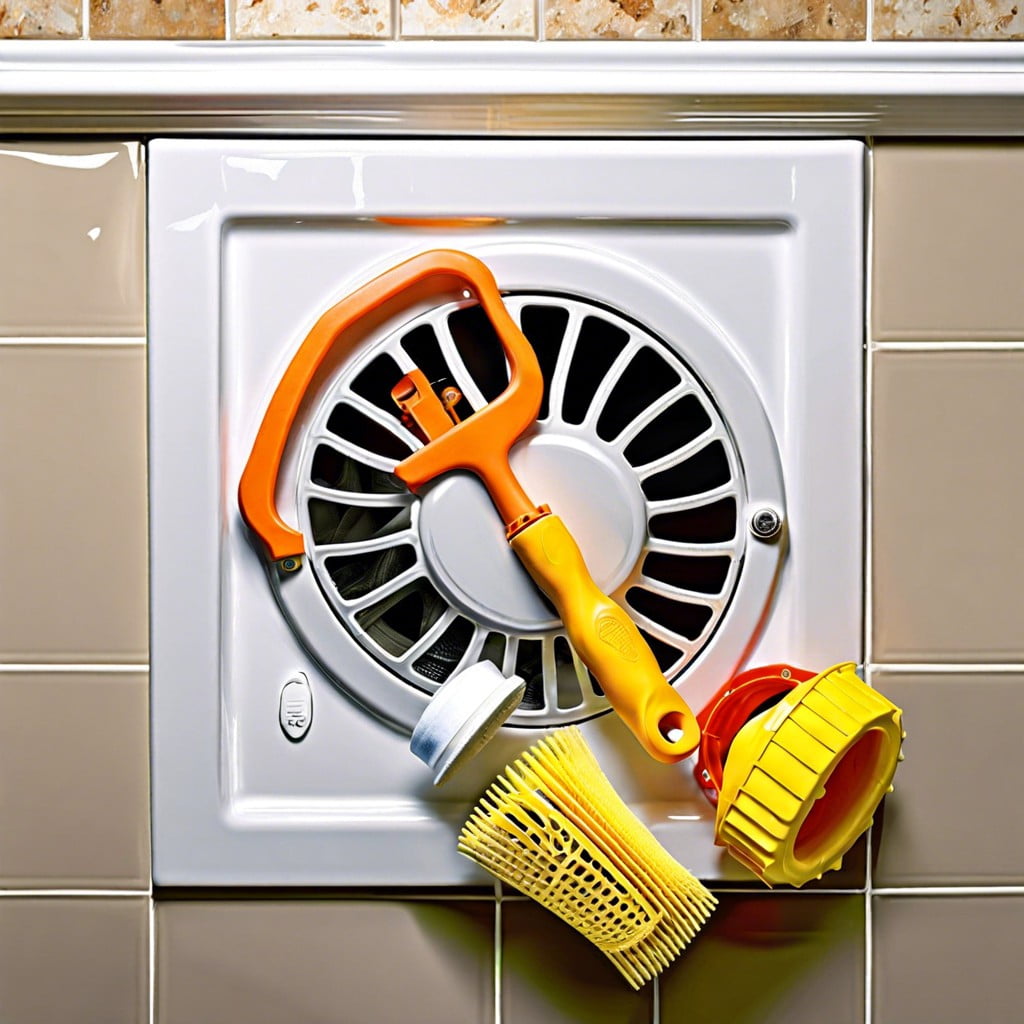Last updated on
In this comprehensive guide, the reader will discover straightforward steps on how to safely and effectively remove a bathroom mirror.
Key takeaways:
- Safety considerations: Wear gloves, goggles, clear the area, have an assistant.
- Gather necessary tools: Heat gun, duct tape, gloves, putty knife, drop cloth.
- Steps to remove the mirror: Heat adhesive, pry mirror, use wire or dental floss, tape mirror, have an assistant, lay mirror flat.
- When to call a professional: Large mirror, strong adhesive, complex wall system.
- Important FAQs: Use precautions, specific tools, prepare wall surface post-removal.
Safety Considerations
Before embarking on this DIY project, prioritize your well-being with these precautions. Wear heavy-duty gloves to protect your hands from sharp edges. Safety goggles are a must to shield your eyes from any accidental glass shards or debris. Clear the sink and counter area to avoid knocking over items, and lay down a drop cloth to catch any fragments and safeguard your surfaces. Finally, if the mirror is large, having an assistant can prevent unwieldy mishaps and ensure a controlled removal process. Remember, haste can turn a simple task into a hazardous situation—patience and preparation are key.
What You’ll Need
As you prepare for this task, gathering the right tools and materials is crucial for a smooth operation:
- Heat gun or hairdryer: To loosen the adhesive holding the mirror in place.
- Duct tape: To prevent shattering by securing the mirror’s surface.
- Protective gloves and eyewear: Essential to protect your hands and eyes from potential glass shards.
- Pry bar or putty knife: This will help you gently pry the mirror away from the wall without causing damage.
- Drop cloth or old towels: To protect your countertop and floors from falling glass and debris.
A well-prepared toolbox is the secret sauce to any efficient DIY task. Each item has been carefully chosen to minimize the risk of accidents and ensure the removal process is as hassle-free as possible. Safety overshadows speed, so do not skimp on protective gear. The right tools will not only keep you safe but also protect your bathroom surfaces from potential collateral damage.
Instructions
Wear gloves and eye protection to prevent injury from accidental glass breakage.
Use heat or a blow dryer to soften the adhesive holding the mirror, moving it around the mirror’s edges.
Gently slide a putty knife behind the mirror to start prying it away from the wall, being mindful not to force it and break the glass.
Consider using wire or dental floss to saw through the adhesive behind the mirror for larger mirrors, working your way down from the top.
Place packing tape in a crisscross pattern across the front of the mirror to prevent it from shattering.
Have a second person help stabilize the mirror as you detach it to avoid it falling.
Once loose, carefully lay the mirror down on a flat, soft surface to prevent chipping or breaking.
Removing a Bathroom Mirror
Initiate the process by scouting for any clips or mounts that secure the mirror to the wall. If present, these must be carefully loosened or unscrewed, allowing a controlled release of the mirror from its fixed position.
For mirrors directly glued to the wall, start by warming the adhesive with a hairdryer. The heat should soften the glue, making the removal a tad easier. Sliding a length of piano wire or dental floss behind the mirror, use a sawing motion to tease the mirror away from the glue.
Throughout this operation, wear heavy-duty gloves to protect against accidental breakage. Have a partner assist you by holding the mirror to prevent it from falling. Place thick padding on the sink or floor as an additional precaution.
When the mirror is free, gently lean it away from the wall and carefully set it down. Adhesive residues on the wall can be removed with a scraper and the appropriate solvent, but be cautious not to damage the wall’s surface.
It cannot be stressed enough: If at any point the mirror does not budge, or the task seems too risky, stop. Call a professional. Some battles are won by knowing when to seek out a trained warrior.
When to Call a Professional
There comes a point where the DIY approach may be more risky than rewarding. If you encounter a mirror that’s particularly large or affixed with a strong adhesive, the potential for damage—or worse, injury—significantly increases.
In circumstances where the mirror is part of a cabinet, wired for lighting, or integrated into a more complex wall system, the removal process is not always straightforward and can involve unexpected complications.
Sometimes mirrors are not only glued but also clipped or screwed to the wall, and attempting to remove these without proper knowledge can lead to shattered glass or a damaged wall. If you find yourself facing these conditions, it’s wise to step back and consider the expertise a professional can offer. They can ensure the mirror is removed safely, without causing damage to your wall or the mirror, assuming you wish to repurpose it.
Lastly, if at any point during the removal process you feel uncertain or uncomfortable with the tools and techniques required, don’t hesitate to call in a professional. It’s always better to err on the side of caution than to deal with the aftermath of a mirror removal gone awry. Remember, the cost of hiring a professional often pales in comparison to the price of repairing a DIY disaster.
FAQ
What precautions should homeowners take when removing a bathroom mirror to prevent injury or damage?
Homeowners should ensure to use gloves and eye protection, and apply tape across the mirror’s surface before removal to prevent shattering, potentially resulting in injury or damage.
Are there specific tools recommended for safely and efficiently removing a bathroom mirror?
Yes, for safe and efficient removal of a bathroom mirror, specific tools such as a pry bar, suction cups, duct tape, and gloves are recommended.
How should the wall surface be treated post-mirror removal to prepare for any subsequent installation or decoration?
Post-mirror removal, the wall surface should be carefully cleaned, smoothed out, and primed to ensure optimal adhesion for any upcoming installations or decorative endeavors.
Recap
